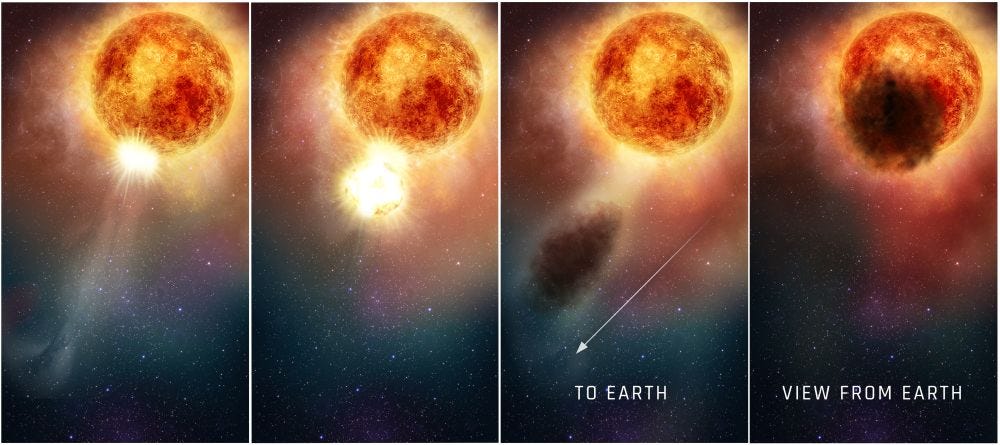Betelgeuse Sneezed - Astronomy News with The Cosmic Companion August 14, 2020
The dimming of Betelgeuse seen over several months at the end of 2019 and start of 2020 was likely the result of the star "sneezing" a study of Hubble data reveals
The dimming of Betelgeuse seen at the end of 2019 and the start of 2020 explained — the red giant star “sneezed.”
By James Maynard

An artist’s impression of how material ejected from beneath the surface of Betelgeuse is likely responsible for significant dimming of the star as seen from Earth several months ago. Image credit: NASA/ESA/E. Wheatley (STScI)
Betelgeuse dimmed in the final few months of 2019, perplexing both professional and amateur astronomers. First noted in October 2019, by February 2020, the star lost two-thirds of its brightness as seen from Earth.
Many astronomers — both professional and amateur — questioned if the change of light revealed the star was on the verge of exploding as a supernova. Now, the Hubble Space Telescope (HST) has been used to explain the mystery.
Easily found in the constellation Orion, Betelgeuse is one of the best-known of all stars in the night sky. This is an aging giant of a star, experiencing wild swings in size and temperature as it runs through a series of different thermonuclear reactions and gravitational collapse.
Read more: https://thecosmiccompanion.net/dimming-of-betelgeuse


